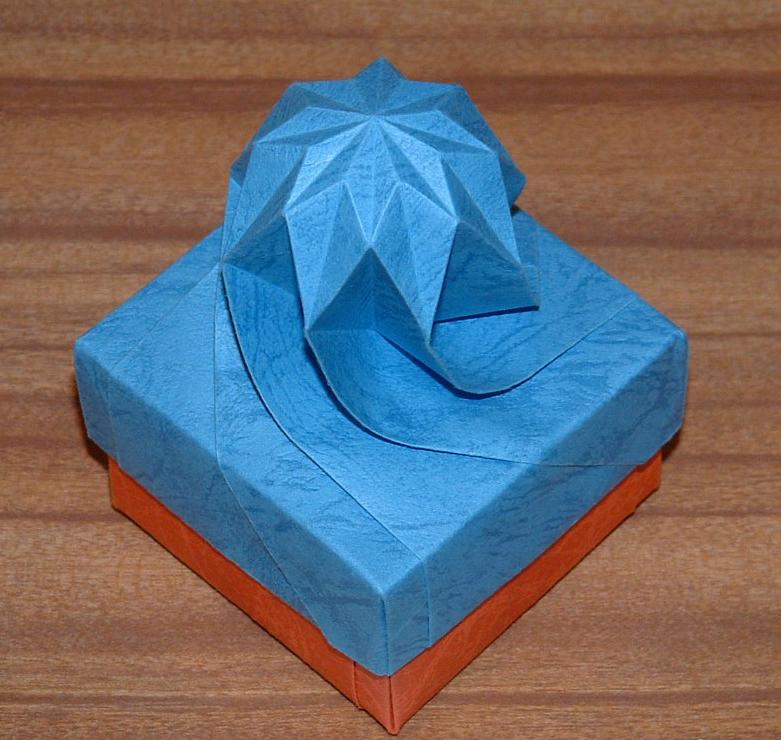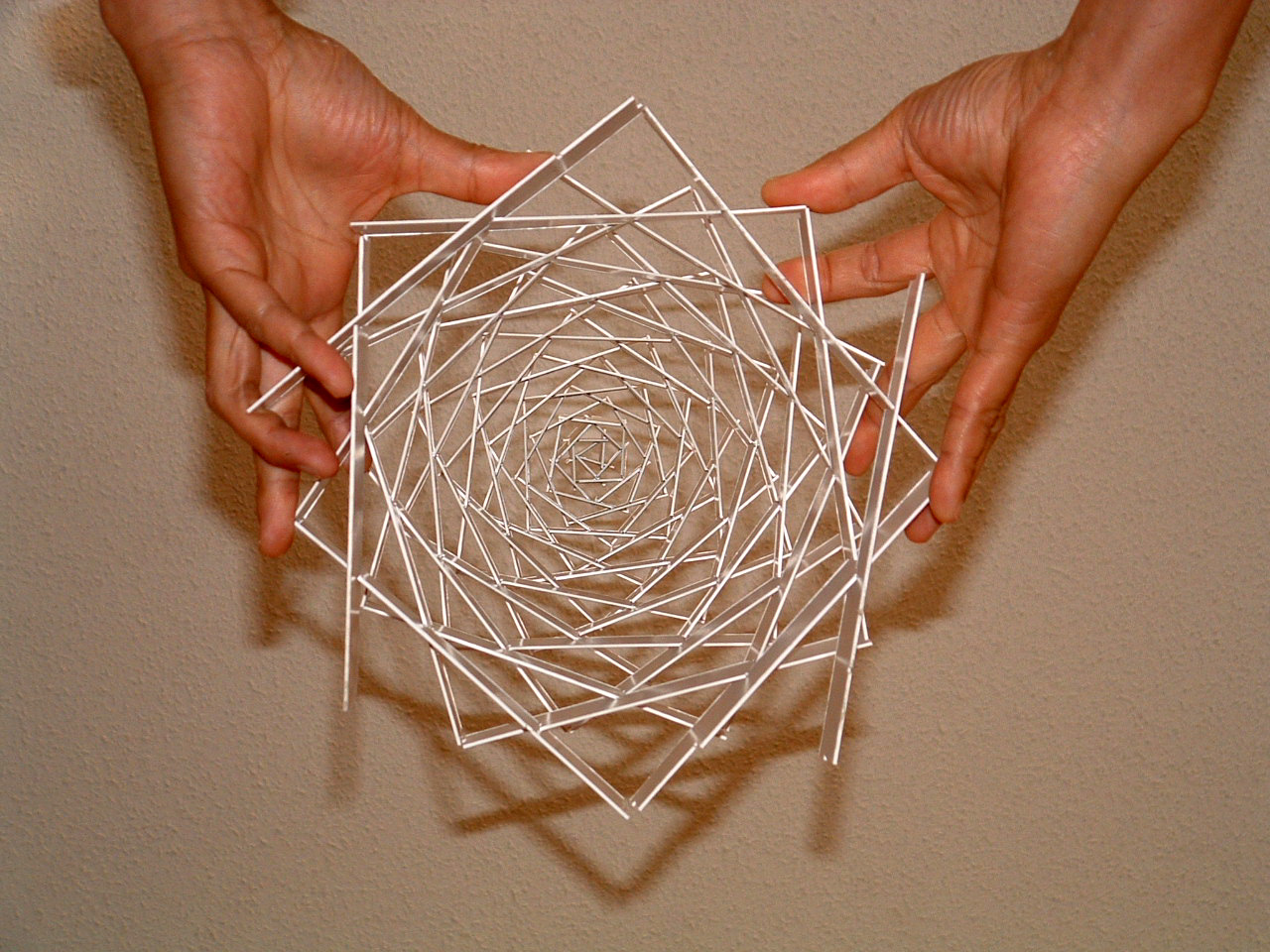Final draft
version. Printed version is available here.
Mathematics
and Art at Bridges/ISAMA 2003
Review by George W. Hart
Dept. Computer Science
Stony Brook University
The
International Society of Art, Mathematics,
and Architecture (ISAMA) conference and Bridges:
Mathematical Connections Between Art,
Music, and
Science are inspiring forums which bring together people who love
mathematics and art. A vibrant community meets annually to share ideas,
show
off new works, and recharge their inventive energies. To such people,
art and
mathematics is a single subject, a creative, intellectual, enriching,
and
worthy study of patterns and relationships in sensual form. Every
mathematical
topic, including chaos theory, non-Euclidean geometry, polynomials, and tangrams, and every form of art, including
architecture,
origami, pentatonic scales, poetry, and sundials, is welcome at these
interdisciplinary gatherings.
Although
mathematics has been central to the liberal arts for over 2000 years,
and
renaissance artists and architects considered mathematics absolutely
essential
to their crafts, our popular culture of the past 100 years has largely
lost
track of these relations. So conferences which celebrate the links
between math
and art help restore a great intellectual tradition. The grandfather of
these
recent meetings is Michele Emmer, the Italian mathematics professor and
film
maker who has been a seminal impresario of math and art conferences in

Figure 1. Take-apart
sculpture by Rinus Roelofs
The
July 2003 Meeting
The
588 page conference proceedings is an attractive book containing sixty
five
papers and thirty abstracts. While the talks extended to complex
variable
theory and a feminist deconstruction of philosophy of mathematics,
the bulk
of the work focuses on things which are simply beautiful to perceive
and think
about: artworks inspired by mathematics and mathematical results
inspired by
art. And doubly creative, there are many contributions which are
simultaneously
original mathematics and original art.
With
so many excellent offerings, I can only adumbrate a few of my favorites
to
evoke the richness of the goings on: Manuel Baez presented large
modular
sculptures assembled from sticks, influenced by Louis Sullivan. Jay
Bonner gave
an analysis of Islamic geometric ornament illustrating multi-level
self-similarities. Claude Bruter showed
architectural
designs for a mathematical village and fountain being erected to
exemplify
ideas such as energy minimization and bifurcation. Jean-Marc Castera demonstrated a lucid construction for
the elaborate muqarnas (carved wooden
ceilings) at the

Figure 2. Origami
box by Chris Palmer
Chris
Palmer presented dynamic mandala-like
patterns and
ingenious geometric origami partly based on designs he studied while
living for
six months in a cave outside the
An
exhibit room allowed attendees to spend three days appreciating in
depth many
of the artifacts mentioned above plus a wide range of other works
brought by
the attendees. This included playful tessellations of pinned beetles by
Jennifer Angus, origami jewelry folded from sheets of silver by Fred
Bryant,
three-dimensional stone mosaics based on hyperbolic tilings
by Irene Rousseau, multilayered textile constructions by Beninga
Chilla, a patterned paper scroll by Susan Happersett, ornamented zonohedral
dome models by Marc Pelletier, and paper polyhedra by Magnus Wenninger. Out in the lobby was a large
construction made
of kite-like multicolored cloth triangles by Eva Knoll and Simon
Morgan. In
addition, a concert performance of Tessellations
composed and improvisationally performed
on the piano
by Veryan Weston provided a musical
highlight one
evening.

Figure 3. Bottom-up view
of novel tower structure by Akio Hizume
Splendid
as the presentations and artifacts were, the best thing about these
conferences
is always the people. Elsewhere one might find two cultures of
narrowly
focused artists and mathematicians who would claim little interest in
the
other's field, but here one has a chance to chat with convivial multidisciplinarians who love to share their
expertise.
Anyone who enjoys a visual mode of thinking is certain to enjoy the
experience
of attending these conferences, which are especially valuable
opportunities for
creative educators looking for ideas to enhance the curriculum. There
were many
examples of how art and math may each be used as a hook to engage and
enrich
students.
Grateful
recognition must be given to the many organizers for putting together
such an
outstanding event and permanent proceedings record, especially to Reza Sarhangi for overall organization, Carlo Sequin
for
editing, Javier Barrallo, Juan Antonio
Maldonado and
Jose Martinez Aroza for local
arrangements, and Nat
Friedman and Beninga Chilla
for curating the exhibit.
In
his opening remarks at For
further information on this and past conferences, see: